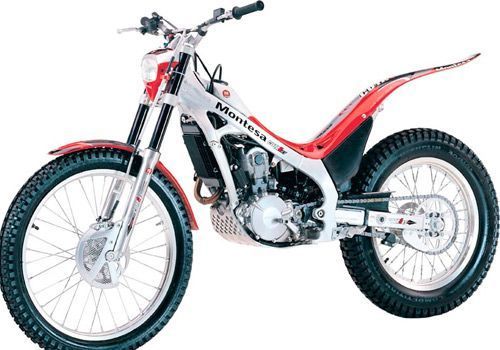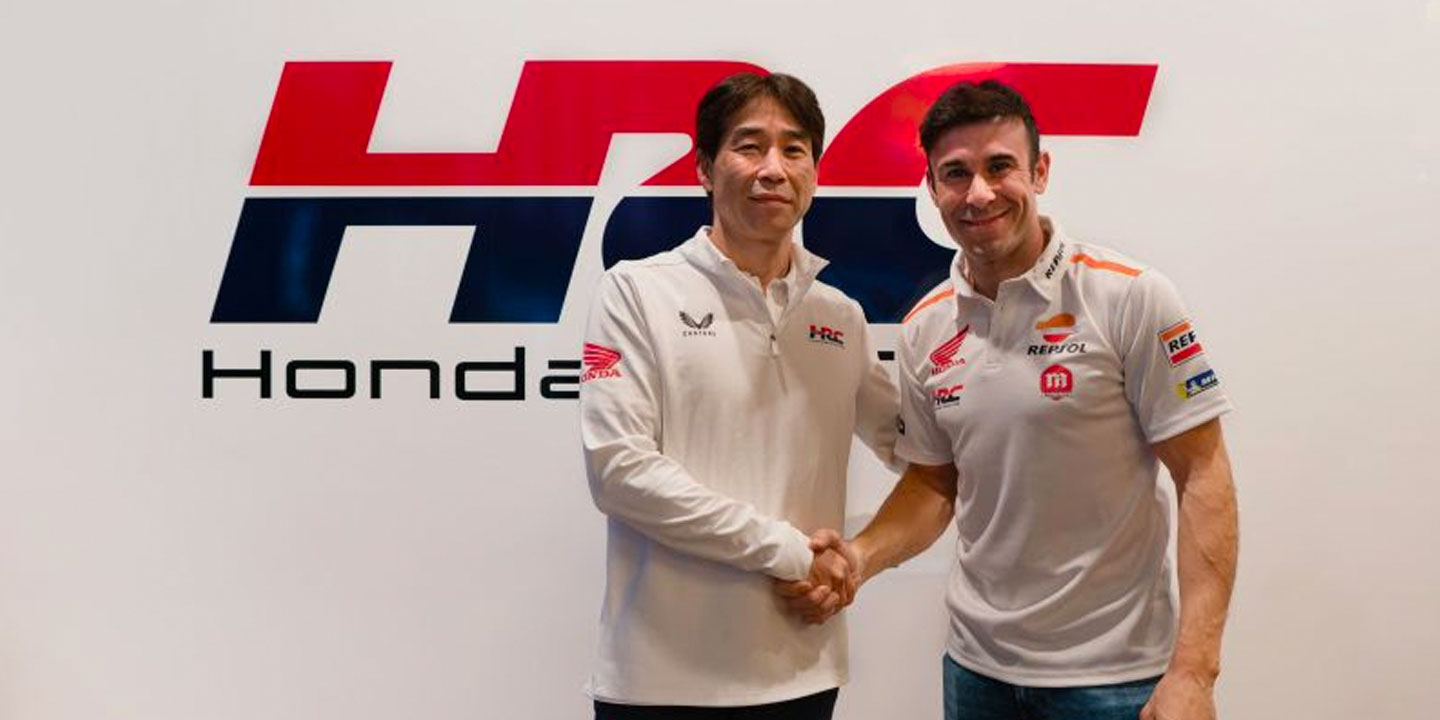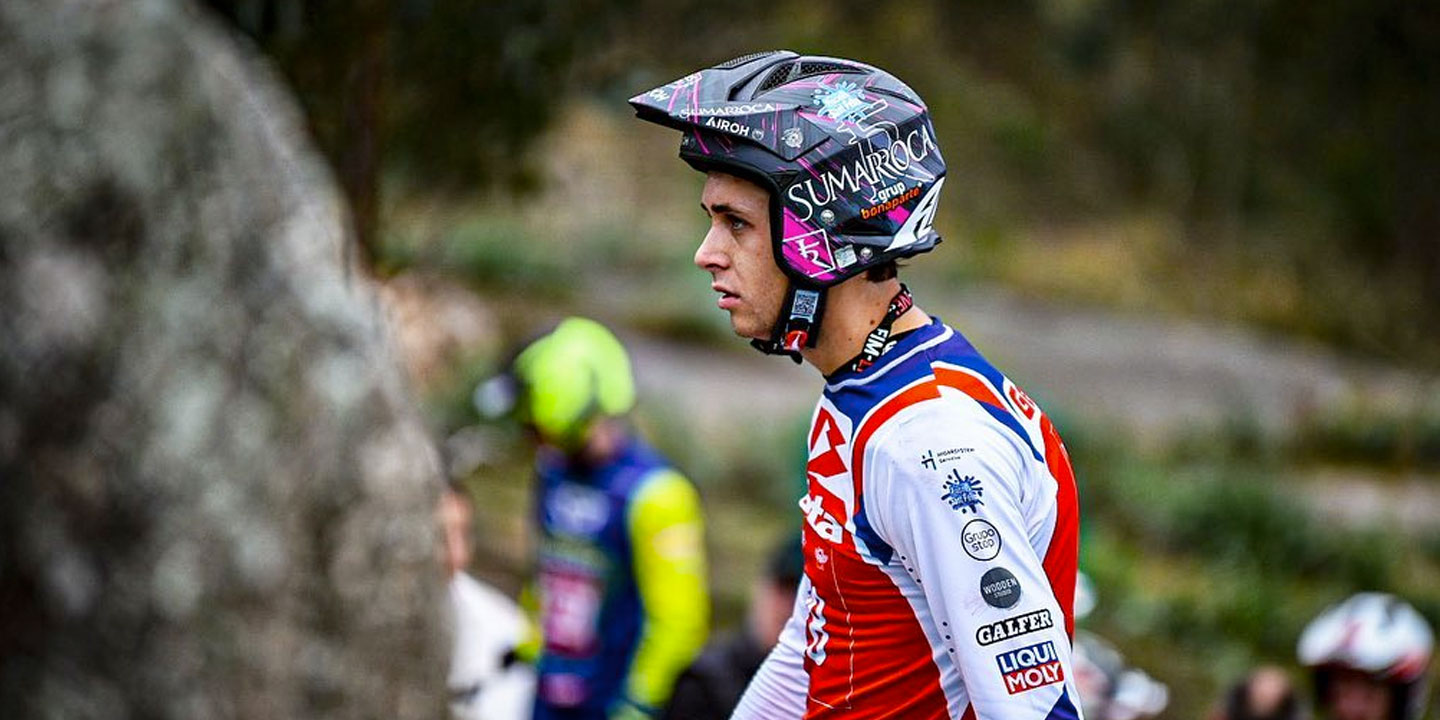
From the outset, it has been labelled as a bike designed to satisfy the average user, partly sacrificing the strong competitive character of its predecessor, the Cota 315R. However, the great evolution experienced since the beginning of the year by its official pilots, endorses the clear technical evolution of the model.
So far, these improvements have not been reflected in the standard unit, which remains virtually unchanged from last year.
In order not to leave us with honey on our lips, Montesa launched last summer a limited edition of the 4RT, called “Repsol”. Equipped with numerous carbon components and exclusive details, this version included Montesa programmable ignition as standard.
However, none of these details have made their way into the series in the new 2006 range. What we do find is a profound revision of the clutch system, improving it through the placement of new discs, whose composition increases its efficiency and smoothness, also facilitating the work of starting up with the speed engaged. In addition, the 4RT receives more vivid graphics, combining the brand’s signature red, with stickers dominated by black and white. As in the last edition, Montesa offers the HRC Kit for injection programming as a complement to the standard unit. This system makes it possible to easily vary, supported by a computer program, different parameters that allow the response of the engine to be adapted to the needs of each user.
QUALITY
At first glance, Montesa conveys harmony. Its details are taken care of down to the smallest detail, even if we look at its engine, the harmony and feeling of supreme quality is present at all times. Broadly speaking, it differs little from any two-stroke, only the voluminous silencer, or the hump of the tank where the fuel pump is located gives it away a priori.
Already at the controls, the 4RT enjoys a driving position reminiscent of its predecessor, the Cota 315R, whose peculiarity is that it is somewhat wider at the height of the footrests. Once everything was adjusted to our liking, we started setting the four valves of the Japanese engine in motion. The start-up is completely different from the 2T. The most striking thing is that there is neither a petrol tap nor a starter, it is the injection that takes care of everything. You simply have to follow the starter lever gently, and do not touch the throttle grip.

Soon after, its engine begins to beat softly, so much so that it’s hard to believe it’s running. However, this apparent ease becomes more laborious when a speed is engaged, although it is true that it improves with practice. After this point, we geared first and started rolling. From the very first moment, the 4RT gives its rider a pleasant feeling of comfort, both because of the soft feel of its controls, and because of its riding position, more upright than most of its rivals. As soon as we enter the open field, we see the excellent traction of the Cota, which we find difficult to make skid, even forcing it in tight turns with little grip.
Its gear ratio with five speeds makes us intuit that perhaps the jump between fourth and fifth gear is staggered, or that the latter is too short and forces the engine to be revved very much on long straights. To our surprise, neither one nor the other. The configuration of this 4T allows you to drive most of the time in fifth gear, and even when it seems to die of revs, all it takes is a hit of gas to stoke it, proving that it is an excellent roader. After a few minutes, we arrived at the place chosen for the photo shoot.
The terrain is perfect to test the qualities of the Cota, as it combines large slopes of earth and stone, with strong slopes of the steep steps of a nearby quarry. The first thing that comes to mind before entering the zone is to get the right gear right: first or second? When in doubt, we tried both options. We start with the dirt section. As they are large slopes, we opted for the second gear. We linked up and down, each time with tighter turns, forcing us to move the bike and start violently very close to the obstacle. We finish, put on the kickstand and comment on the sensations. We agree on the big difference in driving compared to a 2T.
There is no doubt that it is the ideal terrain for the 4RT, on the climbs, almost at the tip of the gas, it climbs as if we were drawing an imaginary straight line without moving from the line, and it climbs so easily that the best advice is simply to hold on well to its fists. Despite the fact that the area involved placing the bike in numerous places, the excessive weight of the 4RT was not entirely a liability, rather an advantage, if we counteract it with the great poise it offers when touching the ground, and the ease of holding on to steep slopes.
Another big difference is when attacking a steep slope from close range. With the 2T we are used to twisting the throttle and releasing the clutch suddenly, to shoot out quickly. Here the 4RT does not admit that license, its biggest secret to achieve an effective piloting is to take advantage of inertia. Its traction and suspensions forgive the fact that it is a little short of gas, but always pushing the distances to the maximum. The second contact was made at the quarry. Here the big steps prevail, with very tight turns and short distances where the bike barely enters. We selected first gear, to make more use of the underside of your engine and abuse the clutch less.
The Sensible
The results are very good at verifying, once again, its stability when linking several medium-sized steps, where almost without gas, it pulls us out as if it were a tractor. Now we complicate the area more, and we discover the weak point of the 4RT. As we said before, it needs more inertia to face obstacles, and when it does not exist, the rider has to complement the slow reactions of the Montesa with technique. In addition, once the obstacle has been overcome, we experience a strange sensation, and that is that the moment a 2T gets “stuck”, the Cota tends to continue advancing, resulting in inaccuracies in the driving. It is said that it can be corrected by mounting a crown with fewer teeth. The next point to deal with is by far the most controversial: noise.
Possibly ninety percent of its owners blame it as the great defect. We agree with this, and the overwhelming sound when opening the throttle suddenly does not help to improve the image of the trial in the face of the delicate environmental situation. Since Montesa has not taken action on the matter, several engineers have. In the first year of the 4RT’s life, new silencers have already been manufactured that contain the noise better. Both WES and MARTIN CLERCH offer two versions that civilize the Montesa more.
GOOD COMPONENTS
Changing the third, we continue with the analysis of the suspensions. Once again, Showa has outdone itself with the difficult challenge of equipping the 4RT. Its overall feel is soft, but at the same time tremendously effective for use in competition. We’ve always praised the versatility of linkless systems, but in this case, the bar is higher. It doesn’t matter if it’s climbing large steps, jumping over flagstones, or overcoming a riverbed, at all times we will get magnificent sensations. Thanks to the homogeneity and operation of the set, the 4RT manages to disguise really high weight figures: 77.4 kg, six kilos more than a Gas Gas Pro.
In general terms, the 4RT has marked, both technically and psychologically, a new era in the conception of trial, taking a giant step in the evolution of these bikes. We will have to wait a while to see the reactions of their rivals, so far only Scorpa and Sherco have raised their cards.
Text: David Quer









